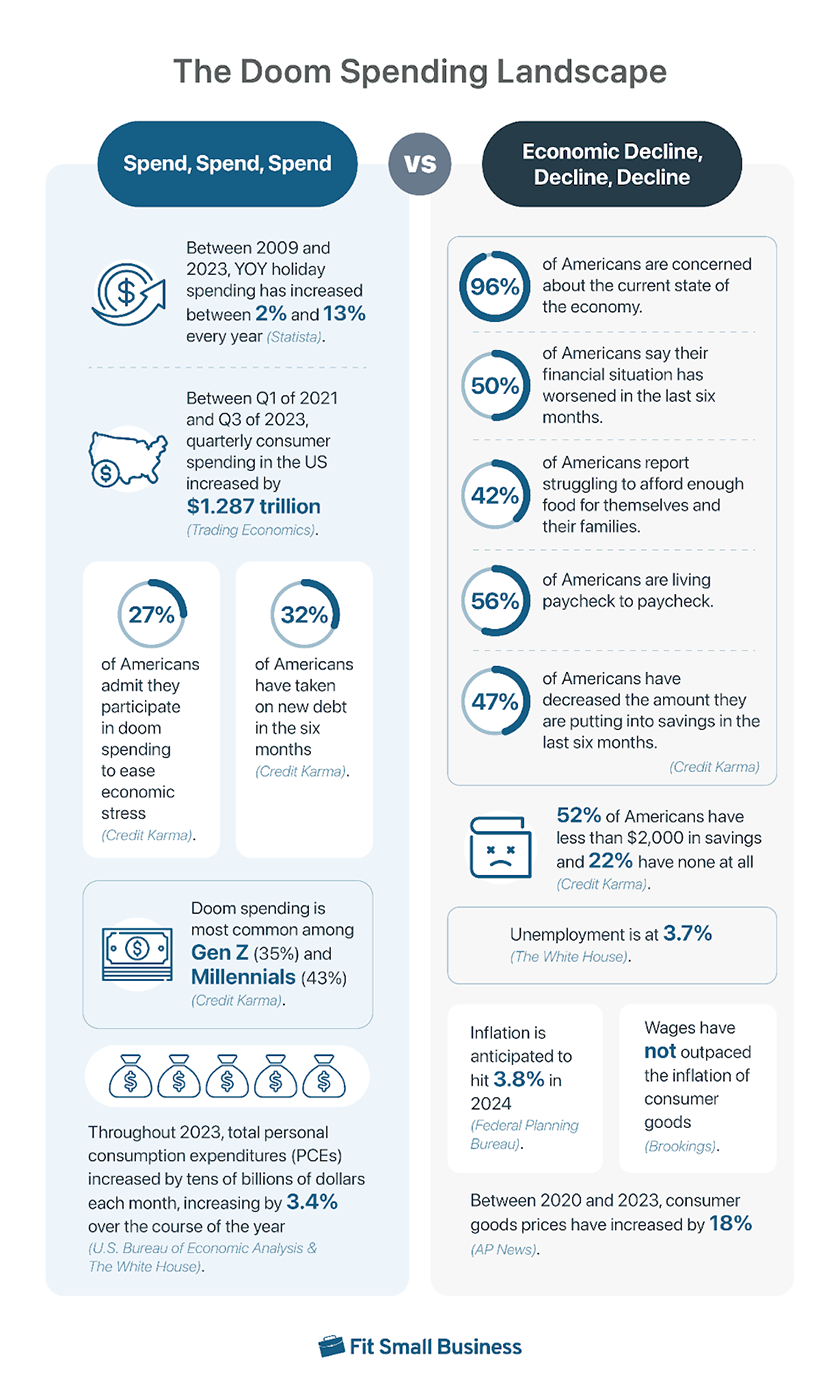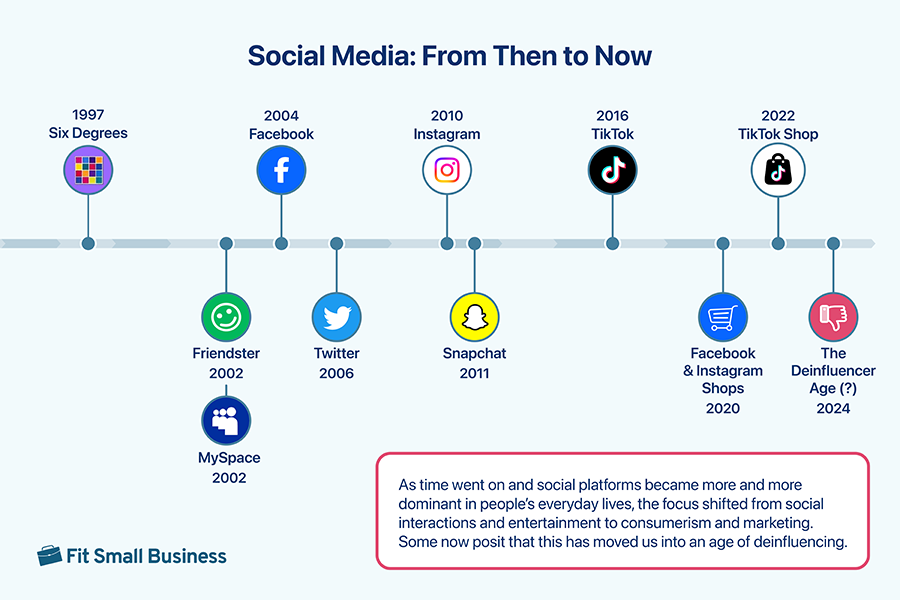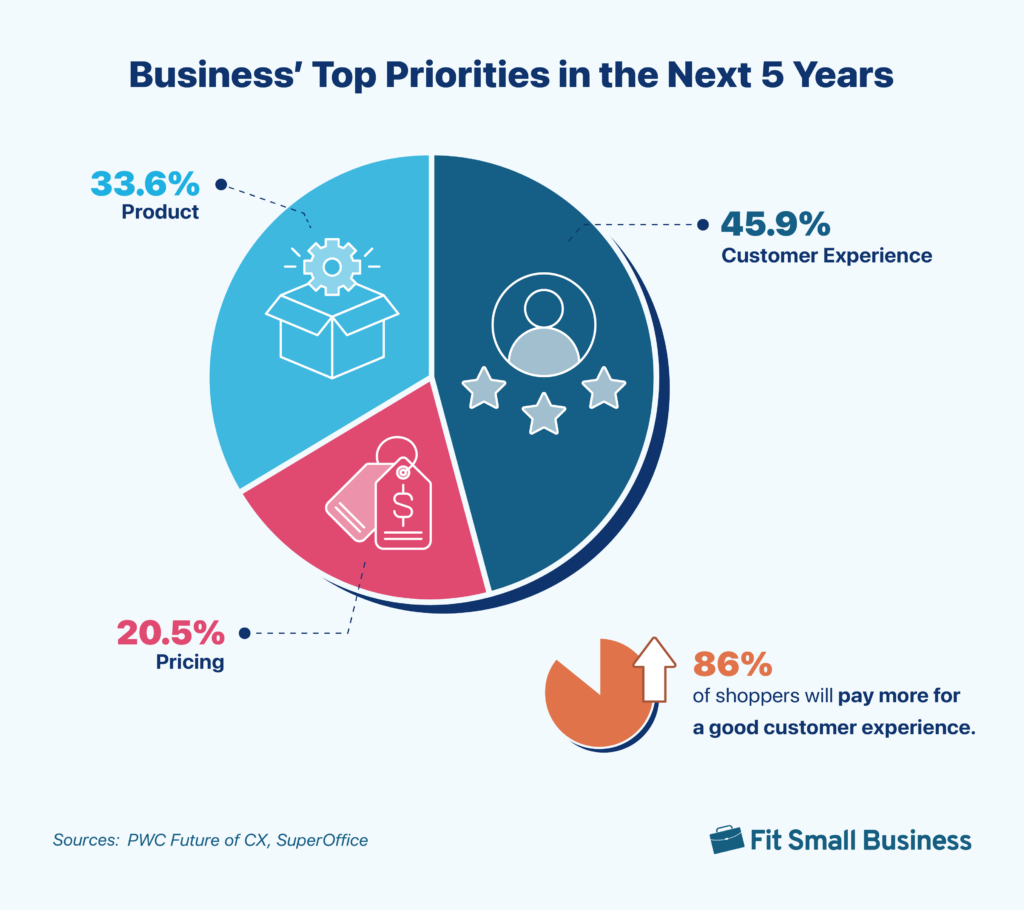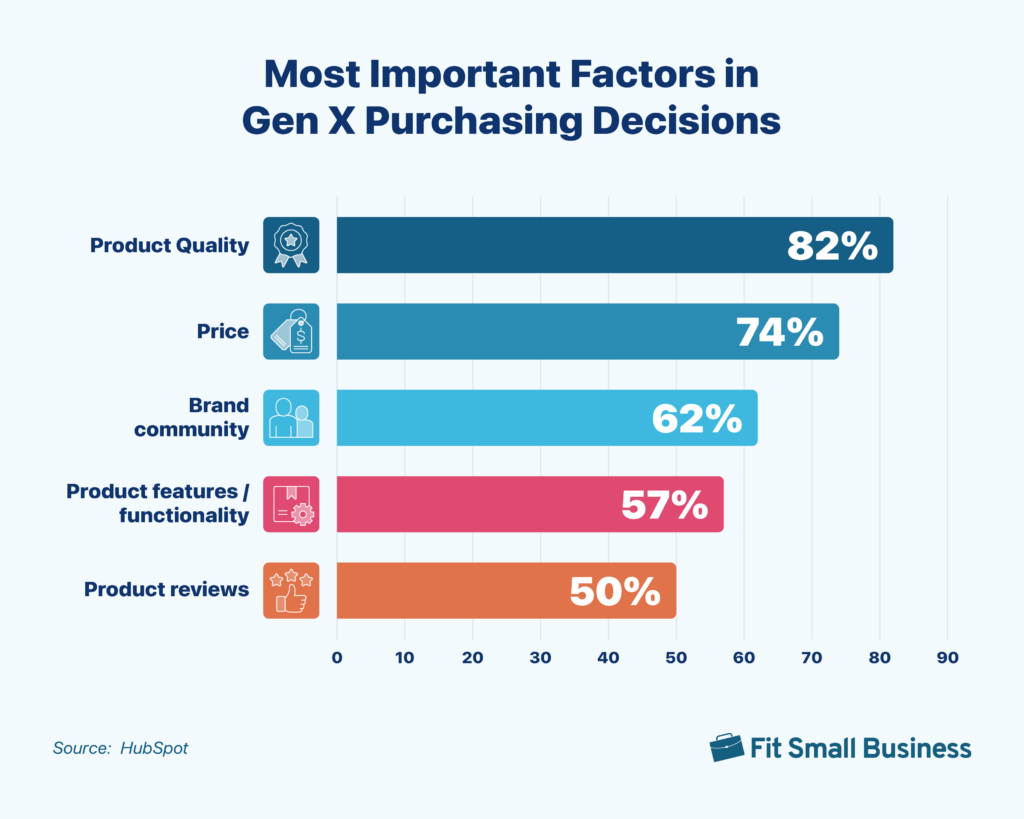Understanding consumer behavior is essential if you want to build a sustainable business.
6 Consumer Behavior Trends for Small Businesses in 2024
This article is part of a larger series on Retail Management.
Consumer behavior is how individuals buy goods, services, or experiences and the elements that influence those purchasing decisions—including psychological, social, cultural, and economic factors.
Retailers need to stay informed about emerging trends and shifts in consumer preferences to effectively connect with target audiences and keep customers coming back for more.
Key Takeaways:
- Shoppers, particularly millennials, continue to spend despite financial challenges.
- In fact, consumer spending is outpacing inflation.
- Yet, consumers are concerned about overconsumption, leading to a “deinfluencing” trend and prioritizing sustainability and brand ethics.
- To capitalize on this increased spending, retailers are focusing on customer experience, social influence, price sensitivity, and sustainability.
Here’s a deeper look at six key consumer behavior trends shaping the retail industry in 2024, why they’re important, and how you can tap into the opportunities.
1. More Consumers Are Doom Spending
Consumers are concerned. Product prices are at unprecedented levels, unemployment and labor are a major concern, there’s a housing crisis, and geopolitical conditions are volatile. Despite this global feeling of “impending doom,” consumer spend is strong.
“Doom spending”—a rise in consumption inspired by fear of future economic and global conditions in which such spending won’t be possible—is growing. In fact, consumer spending is even outpacing inflation, which is seeing historical highs.

How to tap into this trend:
- Remain optimistic. You don’t need to resort to fearmongering to take advantage of doom spending. Be a constant source of positivity and inspiration for your customers, a steady and reliable source during a time when they feel uncertain.
2. Consumers Are Interested in Deinfluencing
Influencer marketing has completely changed how consumers use social media to learn and find out about brands and products. But so much influence has also caused many consumers to grow weary and fatigued. They’re sick of being marketed to—or constantly “influenced.” Thus, “deinfluencing” is a recent trend.

According to one study, 36% of consumers have decided not to make a purchase because of negative online reviews or influencer criticism—another form of deinfluencing.
How to tap into this trend:
- Use your customers to help spread the word. Implement customer loyalty and referral programs to encourage organic sharing from real-world shoppers. This is also a more cost-effective tactic than hiring influencers.
Read more about retail’s influencer economy:
3. Consumers Seek a Great Retail Customer Experience
Investing in customer experience (CX) is a top priority for the next five years for about 46% of businesses.
If done well, your CX improvements can directly boost your bottom line—86% of shoppers will pay more for your products or services from a business with good CX.

CX is especially important for Generation Z consumers. They have higher expectations than other generations. They tend to be less satisfied with their current customer experiences, with just 50% satisfaction compared to just over 70% for previous generations. They expect expediency, customer-focused policies, and transparency.
How to tap into this trend:
- Drive experiences, not just sales. Today’s retailers need to find ways to engage shoppers rather than simply ask for their money.
- Create mini content studios in your retail space. This can appeal to a younger demographic and boost UGC and word-of-mouth marketing.
4. Gen Z Consumers Care About Brand Ethics
Gen Z consumers are conscious buyers in many ways. They prioritize brands that embrace environmental consciousness, diversity, and other qualities that align with their ethical values. In fact, 80% of Gen Z consumers say they’re likely to base their purchases on a brand’s mission. Another 74% say they’re likely to boycott brands that go against their values.
Not only do Gen Zers want their brands to have ethical environmental and social practices, but they also expect them to show diverse and realistic representation in their advertising.
How to tap into this trend:
- Use relatable humans in your marketing rather than picture-perfect models. Super-skinny and perfect skin are no longer the norm.
- Incorporate UGC into your marketing mix. This makes your brand approachable and relatable.
5. Millennials Continue to Spend the Most Online
Millennials remain strong spenders even in times of economic challenges. Nearly three-quarters (73%) spent the same or more online in 2023 compared to previous years. They’re actually the biggest online spenders when you look at comparison by generation.
They also tend to purchase more luxury goods than other groups. More than a quarter (27%) said they intended to spend more on luxury purchases in 2023 compared to previous years. This figure was 20% for Gen Z, 22% for Gen X, and 21% for baby boomers.
How to tap into this trend:
- Keep millennial customers in mind when designing and writing copy for your online store. Think about what’s going on in their lives and find ways to appeal to those life stages.
Read more about generational marketing in retail:
6. Gen X Consumers Prefer In-store to Online Shopping
Ecommerce is on the rise globally, but Gen X consumers in particular keep the demand for brick-and-mortar retail strong. Nearly three-quarters of Gen Xers prefer to purchase products in-store—while just over half prefer online marketplaces like Amazon. Only about 25% like to go directly through a company’s website.

Even as the economy continues to face uncertainty and inflation rises, Gen X looks for quality over price. As many as 82% say quality is the most important consideration when deciding if and what to buy.
Types of Consumer Behaviors
There are many different types of consumer behaviors depending on the context. Understanding these common behaviors can help you find strategic ways to turn behaviors into sales.
Impulse Buying
Impulse buying is when consumers make spontaneous purchases without much consideration. Impulse buys are often smaller, convenient-type items like prepared food, minor accessories, or home decor. You can trigger this behavior with strategic product placement, discounts, and emotional triggers. In a retail setting, the point-of-purchase and cash wrap are great places to position impulse purchases.
Related:
Brand Loyalty
Consumers may develop strong attachments to certain brands, making them repeat customers. Building brand loyalty often requires consistent quality, positive experiences, and effective marketing.
Here are some resources to help foster brand loyalty:
- Customer Loyalty Program Ideas & Examples
- How to Create a Customer Loyalty Program
- What Is Brand Reputation Management & Why Is It Important?
Price Sensitivity
Some consumers are highly price-conscious and actively seek out discounts, promotions, or lower-priced alternatives. Others may prioritize quality over price. While consumers have trended toward quality in recent years, the pendulum is swinging back in favor of the best price. The same amount of high-income consumers (55%) say deals influence them to shop in-store as those who say quality influences them to shop online.
Baby boomers tend to shop both online and in-store for deals more than any other generation. And 68% of consumers in rural areas shop online to find deals. Generally speaking, in-store and online shoppers are influenced most by price and deals and least by loyalty programs.
Product Research
Many consumers conduct thorough research before making a purchase—especially if it’s an expensive or technical purchase. They might read reviews, compare prices, and seek recommendations from friends or online communities.
Social Influence
Consumers may be influenced by the opinions and behaviors of their peers, family members, or social media influencers. Positive reviews, word-of-mouth recommendations, and social proof can all impact purchasing decisions.
Seasonal Buying
Consumer behavior can be influenced by seasonal factors, such as holidays, changing weather conditions, or cultural events. You can capitalize on these trends by offering timely and relevant products or promotions.
Convenience
Some consumers prioritize convenience and opt for products or services that offer ease of use, quick delivery, or accessibility. This behavior is especially common among busy individuals or those with limited time. Cater to those shoppers with convenient purchases—services like click and collect or free returns are great ways to appeal to customers seeking convenience.
Ethical and Sustainable Consumption
Increasingly, consumers are concerned about the ethical and environmental impact of their purchases. In fact, many will even pay more for products that are deemed environmentally friendly. They may prefer products from companies with sustainable practices or those that support social causes.
How to Collect Consumer Behavior Information
There are many ways to gather data about consumer behavior that you can turn into actionable insights for your business. Some methods require more effort than others. The best approach is to use a combination of the below:
Surveys
Surveys involve asking consumers directly about their opinions and feedback through structured questionnaires. You can create online or in-store surveys to collect data on preferences, buying habits, satisfaction levels, and other relevant factors. Send them out via email, social media, website pop-ups, or in-store feedback forms.
Related:
You can ask questions about demographics, like age, location, and education, as well as preferences such as how often they purchase your types of products, where they learn about brands, and what they like about you or your competitors.
Interviews
Interviews allow you to go a bit deeper. You can engage with consumers on a more personal level to gain insights into their behavior. Interviews can be one-on-one or in small groups, and they provide an opportunity to ask open-ended questions to understand motivations, preferences, and pain points. You can also ask follow-up questions to go even further.
Focus Groups
Focus groups are when you bring together a small, diverse group of consumers to discuss specific topics or products under the guidance of a moderator. They allow you to explore consumer perceptions, opinions, and attitudes in-depth. These sessions incorporate interactive discussions and provide qualitative insights that can inform marketing strategies and product development.
Social Media
You can track and analyze conversations, mentions, and interactions on social media platforms to see what people are saying about your industry, brand, or products. Tap into real-time feedback, identify trends, monitor brand sentiment, and understand consumer preferences.
Data Analytics
If you have a website, email marketing platform, point-of-sale (POS), or other retail analytics tools—use them. They’re great sources of information about consumer behavior. Analyze existing customer data, website traffic, sales trends, and other relevant metrics. Look for patterns, correlations, and insights that help explain consumer behavior.
Consumer Behavior Trends Frequently Asked Questions (FAQs)
You can collect consumer behavior information through surveys, interviews, focus groups, social media monitoring, and data analytics, among others.
Consumer behavior is how individuals, groups, or organizations select, buy, use, and dispose of goods, services, ideas, or experiences to satisfy their needs and wants. It involves understanding the psychological, social, cultural, and economic factors that influence consumers’ decisions and actions in the marketplace.
The main difference between consumer behavior and buyer behavior can be found in the difference between consumer and buyer. A consumer is the individual who actually uses the product, while a buyer is the individual who decides to purchase the product.
The consumer and the buyer can be the same person for each purchase, but in some cases, they’re different. For example, a wholesale buyer isn’t the actual consumer of the product. Likewise, someone purchasing a gift is the buyer while the recipient is the consumer.
Bottom Line
It’s important to stay in touch with your customers—understand their behaviors and preferences, how they change, and how you can serve them. By understanding the nuances of consumer behaviors, you can tailor marketing efforts, product offerings, and customer experiences to resonate with your target audience.
Whether it’s embracing doom spending, prioritizing ethical considerations, or enhancing the retail customer experience, businesses that adapt to these trends will stand out from the competition in 2024 and beyond.